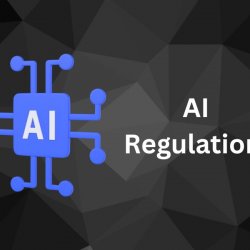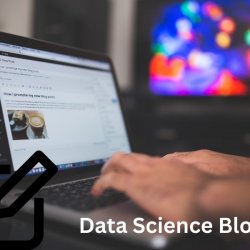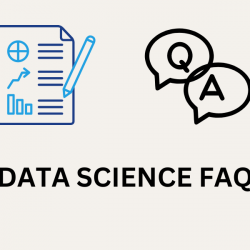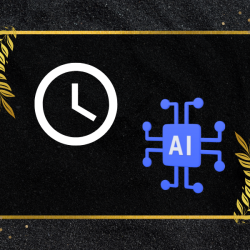Data Science Learning Checklist for 2023


Data Science Learning Checklist for 2023
Introduction
With the world ever changing, it is essential to have the right skillset in order to stay competitive. For those considering a career in data science, it is important to be aware of the knowledge and abilities required for success. This blog outlines an actionable checklist for those looking to learn data science in 2023.
Your first goal should be to understand the fundamentals of programming. Although not every task requires writing code, having a working knowledge of coding will undoubtedly be beneficial when tackling certain tasks like cleaning and organizing data. There are plenty of resources available online that will help you as you begin your journey into programming.
The next step is to familiarize yourself with Machine Learning techniques, such as regression analysis and classification algorithms. Being proficient in ML techniques will help you analyze large datasets and uncover valuable insights for organizational decision making. Each technique has its own use cases and strengths which should be explored separately before moving onto more complex concepts.
Continuing on your learning journey, it is then necessary to understand the tools available for data scientists: from spreadsheet software like Excel all the way up to sophisticated programs like Python or R, each tool has its own use cases and should be studied accordingly. Going through tutorials or courses on these specific tools will provide invaluable experience when you start applying them in projects or daytoday work tasks.
This checklist also gives advice regarding important skills such as problem solving and communication that are invaluable assets in any workplace environment. It’s important to practice honing these skills since they are necessary even when using complex tools and algorithms if you want to get the best out of them. Data Analytics Courses in Mumbai
Understanding Data Science Basics
To begin your journey in understanding data science, first brush up on your background knowledge. You should have an understanding of statistics (including probability, hypothesis testing, and inference) as well as computer programming languages such as Python and R. Additionally, you should become familiar with frameworks like Apache Spark and TensorFlow for big data processing applications.
Once you’ve built up your fundamental knowledge base, it’s time to tackle problem identification and definition. This involves understanding the problem at hand by exploring what data is available, how it will be used, and what insights will help resolve or uncover relevant information. To do this successfully, you must analyze the available datasets for patterns and trends that are actionable for producing meaningful results.
After problem identification is complete, you can move onto exploratory analysis. This process involves using visualization methods to examine relationships between variables and run predictive models on sample datasets in order to identify which methods will yield optimal outputs given various input parameters. Data Science Colleges in Mumbai
Next comes an important step – data wrangling and cleaning. This critical step requires transforming raw data into usable formats while also removing any excess noise or outliers within the dataset that might affect future analyses downstream. Once this is complete, model building and evaluation can commence using techniques such as regression or classification algorithms depending on what type of output/goal is desired from the analysis.
Learning Statistical Analysis and Machine Learning Techniques
To get started, it’s important to understand the basics of statistical analysis. You should be familiar with concepts such as mean squared error, correlation and regression, probability distributions and more. Leveraging different machine learning tools such as algorithms and libraries can give you more directional insight into data patterns. Once you have a better grasp on these fundamental concepts, you can then move on to data visualization techniques. These help to convey complex relationships between variables in an easier to interpret manner through graphs and charts.
The next step is exploring predictive models and algorithms. These allow us to make reliable predictions based on past or current inputs. A classic example of this is linear regression which can be used in predicting future stock prices or sales forecasts. You’ll also want to learn about how different big data platforms work and their associated features so that you’re able to efficiently process large sets of numbers and extract useful insights from them quickly.
Finally, extending your repertoire into artificial intelligence (AI), natural language processing (NLP) and computer vision can also help with more advanced projects related to data science in 2023. AI is a broad field covering concepts like deep learning and reinforcement learning while NLP applies machine learning principles towards language processing tasks such as sentiment analysis or intent classification for chatbots. Data Analyst Course in Mumbai
Gaining Proficiency in Coding and Algorithms
First and foremost, immerse yourself in coding languages like Python or R. Start by doing research on coding languages and then jump right in by watching tutorials online, taking courses, or even teaching yourself how to code. Additionally, familiarize yourself with algorithms like linear regression and decision trees. There are tons of online resources available that can help you understand what they are and how they work.
Once you’ve become more comfortable with the basics of coding and algorithms, it’s important to practice regularly. This will help you get a better understanding of how the different concepts fit together so that you can utilize it more practically when needed. It’s also important to become an expert in debugging so that when issues arise (which they inevitably will), you are equipped to handle them promptly and efficiently.
Another important tip for gaining proficiency in coding and algorithms is to learn about the tools available for data analysis such as SQL or Tableau. Familiarizing yourself with these tools will enable you to use data more effectively to gain valuable insights that could lead to improved decisions or processes within a company or organization. Data Science Course Fees in Mumbai
Applying Data Science Solutions to Business Problems
Data Science is the process of extracting knowledge from data by applying algorithms, techniques, and tools to uncover patterns, detect correlations, and create new insights from the gathered data. Data scientists use these techniques to find solutions that can help businesses make better decisions and ultimately increase their efficiency, productivity, and profitability.
When considering the application of data science solutions, there are several points that should be taken into account before starting any project. Firstly, it is important to understand the problem and identify what kind of insights can be derived from available data sets. Then, it is important to define the objectives of the project, set measurable goals that can be used as criteria for evaluating the success or failure of the solution. Finally, it is essential to select appropriate tools & processes such as analytics & visualization or machine learning algorithms and models that can help extract meaningful information from your data.
To ensure a successful implementation of data science solutions, it is necessary to have a clear checklist outlining the steps required in executing an effective project plan. To get started on applying these solutions right away in 2023 you should consider:
- Defining your goal
- Setting up an environment with appropriate tools & processes
- Selecting relevant datasets for analysis
- Using suitable techniques such as analytics & visualization or modeling for finding meaningful results.
Acquiring Enterprise-Level Skills for Big Data Analytics
First, make sure you have a strong foundational understanding of data analytics and associated tools. This includes in-depth knowledge of SQL and NoSQL databases as well as experience with programming languages like Python, R, and Java. Additionally, learn how to use popular big data tools such as Hadoop, Apache Spark, and Tableau.
Second, gain experience with enterprise ingestion and storage processes like ETL (extract transform load). Understanding how different types of data are collected and stored in an enterprise environment is critical for advanced analytics projects.
Third, practice complex analytical queries. Learn how to write custom queries using SQL or other programming languages to uncover patterns from large datasets that would not be possible using traditional methods. Getting comfortable with query optimization techniques will also come in handy when dealing with large datasets.
Fourth, develop your modeling and testing skills. You should be able to apply various statistical models such as linear regression or decision tree analysis for predictive analysis projects. Furthermore, you want to be able to evaluate and compare model performance against benchmark results using appropriate metrics like precision or recall scores.
Building a Portfolio of Projects and Case Studies
- Create a Portfolio Consider developing a project portfolio that showcases your signature work, from data analysis and interpretation to visualization and machine learning algorithms. Keep it up to date with projects you’ve completed over time and periodically update it as necessary.
- Build Experience: Take full advantage of any opportunities that come your way to do realworld work or gain consulting experience. You can also join forums, participate in hackathons or volunteer at local nonprofits—all of these activities will demonstrate your capabilities as well as collect valuable contacts for networking purposes.
- Collect Project Samples Assemble an organized collection of project samples that highlight the data science techniques you’ve used and skills learned along the way. The more comprehensive this library is, the better—it should include all phases of projects from start to finish, such as datasets gathered, exploratory analysis conducted and models developed.
- Showcase Analysis Skills Beyond just collecting project samples, showcase your technical abilities by writing up case studies about each project sample from start to finish detailing all aspects from data gathering methods through model development outcomes including any obstacles encountered along the way and how they were mitigated or resolved.
Get Started With Your Personalized Data Science Checklist for 2023
The Importance of Planning:
When it comes to developing a successful career in data science, it’s important to take the time to plan ahead. Creating a checklist allows you to set goals, expectations and timelines for yourself, so that you can stay on track as you progress throughout the year. Taking inventory of your current skill set and defining the specific role that you want to take on within data science will also help guide your learning plan – giving you a clear path forward that is tailored just for you. Future of Data Science Jobs in India
Benefits of Your Personal Data Science Checklist:
Your personal data science learning checklist will provide focused structure and direction as you work towards achieving your goals in 2023. Setting up checkpoints along the way will help ensure that you stay on track each step of the way, while having key objectives written down will keep motivation levels high. In addition, developing a portfolio, creating a learning plan and assessing available resources helps equip yourself with all of the tools necessary for success.
Taking these steps when creating your unique data science learning checklist for 2023 sets an important foundation that can increase your chances of success while helping make sure that your hard work will pay off in launching a lucrative career in this field. With careful planning, dedication and commitment – let 2023 be your year as you begin making strides towards achieving your dreams within this dynamic area.






Ingen kommentarer endnu